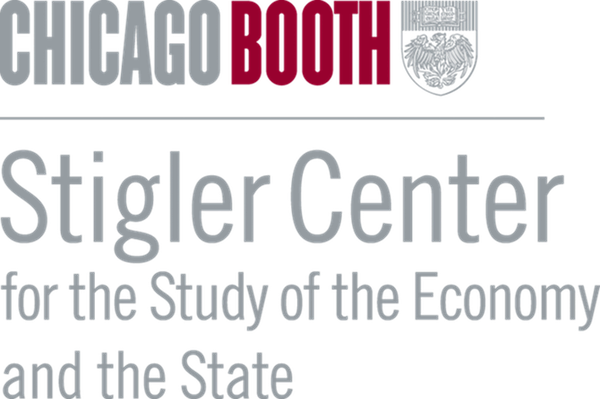Populist leaders like United States President Donald Trump are zealously challenging the authority of independent technocrats and judges. This backlash follows decades of steadily increasing delegation of policymaking authority to unelected experts, bureaucratic agencies, and the judiciary. In new research, Gabriele Gratton and Jacob Edenhofer argue that such backlash is a predictable development in political environments where majorities are unstable and new political coalitions frequently favor policies at odds with those crafted by social welfare-maximizing technocrats.
Populist leaders often rail against independent technocrats, arguing that the constraints implied by their independence thwart the “will of the people.” Indeed, populists confidently proclaim that “the people have had enough of experts” and, often successfully, “drain the swamp” of bureaucrats tasked with implementing legislation and managing approved budgets. They lambast judges for upholding minority rights against executive overreach, sometimes even branding them “enemies of the people.” They also threaten to encroach on the independence of authorities legally charged with steering monetary or climate policy.
No government in recent memory has channeled this anti-technocratic fervor more potently than United States President Donald Trump in his second administration. With figures like Elon Musk—the “DOGE tsar”—at the helm, the Trump administration has gutted the federal bureaucracy through mass layoffs, forced or semi-voluntary resignations, and deep budgetary cuts, including to USAID and likely the IRS. Recently, Milwaukee County Circuit Judge Hannah Dugan was arrested for allegedly obstructing the administration’s deportation policy.
Populism vs. Technocratization
To understand why such anti-technocratic sentiment is gaining traction, we need to zoom out. What’s often overlooked—amid justified alarm over the damage populists inflict on democratic institutions—is that the “age of populism” emerged in the wake of decades of rising technocracy. Over the past thirty years, legislatures and executives across the West have steadily delegated policymaking to unelected technocrats: academic experts, career bureaucrats, lawyers, and judges.
These twin processes of “technocratization” and “judicialization” are perhaps most powerfully illustrated by the proliferation of independent central banks and the rise of climate litigation across the world. While these shifts often improve the quality of policymaking, they also significantly limit the scope for majoritarian policymaking—policy decisions controlled by elected officials who depend on electoral majorities.
Why, then, did the wave of anti-technocratic populism follow on the heels of technocratization? What is behind the struggle between those trying to reclaim power from unelected technocrats and those pursuing greater delegation to technocrats to safeguard rights and policies, like climate policy, against voter myopia and populist excesses? Does this populist struggle suggest that something is “wrong” with liberal democracy and its contemporary reliance on technocracy?
In a new paper, we argue that the classic tension between majority rule and minority rights—inherent to liberal democracy—has increasingly taken the form of a clash between majoritarian and technocratic governance. The former refers to policies decided by majority vote. The latter entrusts state bureaucrats, experts, and judges to enforce the rule of law, protect individual and minority rights, and engage in evidence-based policymaking. At times, liberal democracy manages to balance these two forces, producing lasting institutional stability. At other times, they come into conflict—fueling institutional instability.
A dynamic model of the rise and fall of technocratic democracies
To explore this tension, we develop a dynamic model that helps explain when majorities in liberal democracies delegate power to technocrats—and when they claw it back.
For the purposes of our argument, we take an idealized (and perhaps overly optimistic) view of what technocrats do: we assume they maximize social welfare. That doesn’t mean they are apolitical or unbiased. Technocratic biases are clearly very important. But we show that, even if these biases—reflecting the interests and ideas of past majorities—did not matter, technocratic and present majoritarian governance can be at odds.
In fact, social welfare maximization encompasses the preferences of both the majority and minority, which can lead to outcomes very different from those generated by majority voting. For example, in a society of 100 voters, 60 may receive a benefit (including any altruistic concern they may have) equal to 11 from policy A and 10 from policy B; whereas 40 voters may receive a benefit equal to 0 from policy A and 10 from policy B. Majority voting would result in choosing policy A, amplifying the benefits of the 60 majority voters. Social welfare maximization would result in policy B (total welfare equal to 100) rather than A (total welfare equal to 66).
Social welfare maximization therefore means that technocrats give greater weight to minority interests than pure majority rule. This tension is the key force driving technocratization: delegating power to welfare-maximizing technocrats is one way for majorities to “lock in” their preferences when their hold on political power is uncertain. That said, current majorities will not always seek to disempower bureaucrats or curtail their independence. Rather, how majorities delegate power to bureaucrats reflects their expectations about who holds power in the future.
Unstable majorities and technocratic-majoritarian cycles
Central to our dynamic framework is how expectations shape majority decisions. Two expectations, in particular, influence the majority’s decision-making: first, the anticipated probability that today’s majority will remain dominant in future periods; and second, the probability that the most crucial policy issue of the present remains prominent in subsequent periods. A majority with sufficient confidence in its long-term dominance will prefer majoritarian control, securing its ability to adopt preferred policies.
Conversely, a fleeting majority, one that could become a minority in the future, will prefer to delegate authority to technocrats. Delegation then becomes a form of intertemporal political insurance. This kind of insurance is most valuable for majorities that strongly value a policy—on taxes, welfare, or climate action, for example—and anticipate the issue’s continued prominence. Technocratic delegation benefits minorities because technocrats’ focus on social welfare means that they give greater consideration to minority concerns than majority rule.
Our model identifies three possible long-term regimes emerging from these conditions. First, in a stable technocracy, future majorities consistently honor past delegation decisions. When majorities are fluid and technocratic policymaking does not consistently benefit the same group at the expense of another, all fleeting majorities are lured into establishing a technocratic democracy.
Second, in a stable majoritarian democracy there is (next to) no delegation to technocrats because the dominant group expects continued power or frequent shifts in policy salience, muting incentives for delegation.
Third, institutional instability—in the form of technocratic-majoritarian cycles—arises when the probability of remaining the majority is at intermediate levels and the salient policy issue is likely to be stable over time. Majorities, favored by technocracy and worried about becoming minorities, will delegate policymaking to technocrats as intertemporal insurance, whereas majorities whose preferences are misaligned with welfare maximization will want to return to a majoritarian democracy.
We believe the U.S.—and perhaps most Western Democracies—are currently witnessing the ramifications of an unstable technocratic-majoritarian cycle. As in our model, culturally and economically liberal majorities over recent decades have attempted to grant more power to experts and judges to foster the rights of minorities, to realize gains from international trade and stable monetary policy as well as to ramp up efforts to combat climate change. They did so, we maintain, in the fear that future majorities may want to undo some of these policies—and in the hope that technocrats would uphold them, as these policies maximize welfare. Their fear was justified, as shown by the infringement of minority rights by populist governments around the world and particularly the second Trump administration–-as well as their protectionist, anti-judicial, and anti-climate policies.
Checks and balances to the rescue?
Such instability is particularly worrisome, given that—in the extreme—it may result in democratic backsliding or outright autocratization. We might think that our best response to such cycles is to strengthen checks and balances. But what if the very checks designed to protect liberal democracy end up fueling its instability? Our model suggests that even majorities concerned about backsliding may still support reforms that weaken technocratic institutions—especially when they expect to remain politically dominant and when their most important policy priorities remain salient.
Somewhat paradoxically, stronger checks that lower the short-term risk of autocratization can inadvertently increase its long-run risk, in line with other research by Gabriele Gratton and Barton Lee. In fact, stronger constraints on executive power can reduce the (perceived) cost of supporting autocratically minded candidates. After all, these constraints mean that they can do less damage. This observation echoes the ease with which some Trump voters dismissed warnings that he poses a threat to U.S. democracy by implicitly pointing to the strength of the checks and balances that the ensemble of U.S. institutions imposes on him. If checks and balances were weaker, voters would be more wary of supporting autocratically-minded candidates.
New institutions for a resilient liberal democracy
Liberal democracies are struggling to balance commitment to evidence-based welfare-maximizing policymaking and the democratic promise to listen to what a majority of voters want. Despite its proliferation, technocratic delegation is fragile. Central banks, regulatory agencies, and courts can easily become tools for majorities to entrench their preferences when their grip on power seems tenuous. Populist backlash then naturally arises not just against policies, but against the institutions that craft them, and the resulting institutional crises can precipitate democratic backsliding.
Breaking this cycle requires more than minor tweaks to institutional design—or doubling down on old strategies. Further technocratization or stronger checks and balances risk provoking even stronger majoritarian, populist backlash. Yet, abandoning technocratic governance threatens evidence-based policymaking and minority rights.
This brings us to one of the defining questions of our times: what reforms can help liberal democracies better balance the tension between majoritarian and technocratic governance? We do not know the answer. Yet, we believe that a better understanding of the causes of its fragility is the necessary first step. The challenge is one of institutional creativity: devising new institutional arrangements that boost democratic legitimacy while preserving the expertise and continuity that complex policymaking demands. Without this balance, liberal democracies risk lurching between technocratic entrenchment and populist revolt—eroding the very institutions they rely on for resilience.
Authors’ Disclosures: The authors report no conflicts of interest. You can read our disclosure policy here.
Articles represent the opinions of their writers, not necessarily those of the University of Chicago, the Booth School of Business, or its faculty.






